#cinematog
Explore tagged Tumblr posts
Text
making gifs of wh13 is such a pain in my ass bc it's like, such a not well put together show and i am trying so hard to say that nicely. it has many charms, etc., and you can't really hold it to a standard of Convenient For Mediocre Gifmakers. but still! minor issues with continuity editing are very easy to not pay attention to while watching but then you've got, like, shot-countershot and they're each about 30 frames so you SHOULD be able to put them together in a single gif except when you do they look bonkers, and don't get me started on the lighting and color grading.
i have been trying to make gifs of this particular sequence for ages and every time i try it i've got more adjustment layers than frames and i'm almost 100% sure i've made it worse than the show looked. to be sure it's a close race. grumble!

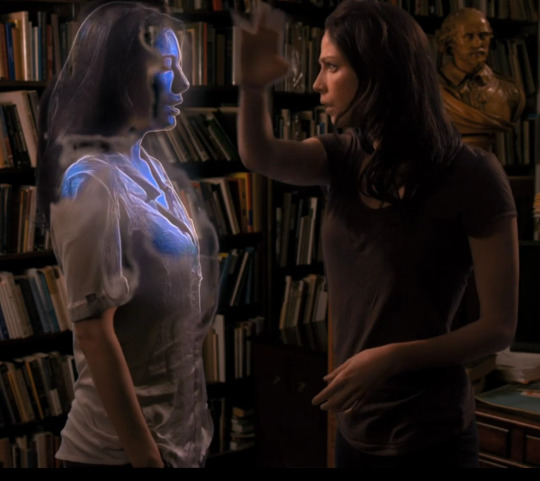
#like obvious caveat anyone with half an eye for color would do better than me at this for i am simply not very good at it#and every once in a while i'm like god maybe it's time to actually Learn Photoshop#i get cranky about cm cinematog whether it's early 'experimental' stuff (the constant arc shots u know)#or any of the like... faux handheld 'dynamic' stuff. both of which are very hard to gif and genuinely quite bad to watch#but this is way harder to work around (less of it / fave scenes especially difficult / etc.)#grumble. anyway. we move on. it's just annoying when the scene that drives u the most nuts is impossible for you to gif#this is also why my mobile header looks like ass. i tried my bestest but i think i just overcorrected
11 notes
·
View notes
Text
The Bear Season 3 & Meta Filmmaking II
with the opinions & work of William Friedkin
This is who Richie is this season.
Here is Part I on meta filmmaking, where we discuss the first branch of the film legacy: Hitchcock, who inspires the meta filmmaking choice this season and self-reflexivity- the director surrogate, Richie.
Richie, as director surrogate, guides us through dialogue inspired by William Friedkin.
The part of the legacy Storer took from Chicago native Friedkin was his passion for filmmaking and his opinion on the movies and the industry itself. Friedkin considered the Academy Awards as a fool's errand to pit art against art, and Richie's dialogue on The Star System for Restaurant highlights this.
Interestingly enough- did Storer tell his own prophecy? Before falling off Hollywood's grace, Friedkin came from a high of two highly acclaimed films (like The Bear's two highly acclaimed season), Friedkin was riding off a high from The French Connection and The Exorcist, but his third film received mixed reviews. I'm wondering if this season was Storer's big fuck you to the Hollywood System and Awards System.
Another note: Hitchcock's Vertigo received mixed reviews from critics but now is referenced in filmmaking legacies.
We haven't seen Storer give any awards speech, have we? Calo has shown up, but no Storer.
Legacy not only comes from the work but also comes from the opinions of those before you.
For Friedkin's work- it can be taken as part of the legacy and why most of us here are seeing all sorts of horror inspiration this season.
The Hitchcock-Friedkin legacy.
Fun fact: William Friedkin's Exorcist- well, exorcist steps- where the priest falls to the death were informally called "Hitchcock steps"for famed suspense and horror film director Alfred Hitchcock. But is now referred to as The Exorcist Steps. Legacy!
If we go based on other legacies—based on William Friedkin's opinions of Hitchcock, he inspired the editing of Friedkin and his understanding of suspense, which influenced his movie-making skills for The Exorcist. @moodyeucalyptus explained they see parts of Mike Flanagan's Haunting of Hill House as we discuss the hauntings of this season. How is Mike Flanagan part of the Friedkin Legacy? He was inspired by the workings of the exorcist and is now part of the new remake.
Another horror inspiration: Now how is Friedkin related to another horror legacy that @espumado wrote a meta on this week?
The exorcist legacy comes from the Night of the Hunter legacy.
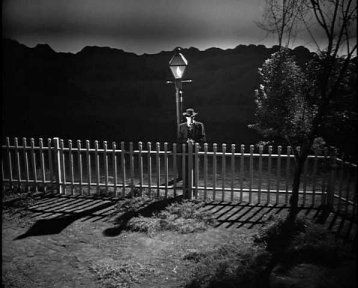

Carmy: Like, um, something would start somewhere, and then, uh, people would take that thing and then they would take it somewhere else. So, all these parts of an original restaurant would end up at a new restaurant, and that kind of thing. That would happen over and over again. And then all these parts of all these restaurants, they would sort of…You know, they would find each other. And then new people would take those parts and put ’em into their restaurant. And the whole thing, it would, um… It would start to happen all over again.
This is all about legacies and meta on where Chris gets his parts.
But how does this relate to Sydney and Carmy?
As we talked about before, Richie is observing. Friedkin, whose legacy comes from Hitchcock, believed Hitchcock was Observational in his directing. Richie the character included himself in the narrative but the one narrative he stayed out of and only observed this season was Sydney and Carmy.
Richie is the director's surrogate, who highlights and explains the basics of why Carmy is the way he is—not who Carmy himself thinks he is but what the audience can take from Carmy's self-sabotage.
The story we are observing is correct. This dynamic between Syd and Carmy is worth examining because it is a central part of the story and a big aspect of the filmmaking process.
I'd say it's proof! Richie is telling us our eyes are not deceiving us; the dynamic is interesting.
As an audience, we subconsciously absorb the cinematography, music, direction, and dialogue, taking cues on the story being told and its inspirations. Another ledge that can show us that their synergy is legit its filmmaking technique in editing.
Friedkin-Scorsese-Hitchcock favorite part of filmmaking is the editing. Scorsese is the best example of this, and I'll explain his legacy in editing in the next part and why that relates to sydcarmy.
Read:
Hitchcock and His Use of Surrogates
Ancestors and The Bear by @whenmemorydies
Richie and The Viewer by @whenmemorydies
Natalie & Night of the Hunter by @espumado
The Bear Season 3 & The Mirror @currymanganese
Richie's Journey is not Over @currymanganese
The Paradigm Shift @brokenwinebox
Taglist: @yannaryartside @whenmemorydies @ago0112 @chaoswillcalmusdown @ambeauty @anxietycroissant @turbulenthandholding @tvfantic87
42 notes
·
View notes
Text
wicked getting cinematog/best picture noms. god it’s bleak
#we used to make Movies#not to be that person. but yeah. We Used To Make Movies and Think About Scene Composition
19 notes
·
View notes
Text
Amplification of semiotic particles through a dynamic cinematic music video
Hey everyone! Today I'll try to thoroughly explain the use of amplification in music videos and as a relevant example I've decided to use one of my favorite artists during my teenage years, NF ! NF in particular always made sure there always is a cinematic aspect to his music videos. Iconic lyrics, carefully crafted intrinsic sentences and aspects to the diegesis of the message he wants to tell throughout each of his video clips and songs, yet so cinematically well used. There is a genuine need for the signifier to not lose sight of how the signified may be perceived by the audience and yet NF manages to connect the semiotics to his music videos through amplification of illustration ! I'll use one of the video clips of his latest album to demonstrate my point, I'll link the clip right here ! The name of this song is Hope.
youtube
Throughout the clip, many semiotic elements and concepts can be observed to provide concrete elements to this music clip but I'll start with the basics of what NF tried to achieve as an artist when it comes to his music videos. It is important to be aware of the fact that he strives for his music videos to be as cinematographic as possible, any of his music videos will most likely have elements of illustration and therefore something "deep" or "real" behind it for his fans even though this seems silly it is the way he brands his music and I do find it to be admirable to be as authentic as he is. Hope (the name of this song as previously mentioned) is about self-reflection and a message to NF himself, he literally talks to himself through the lyrics, back vocals and visual allowing to show the voices he is constantly hearing, reminiscing of his actions, words and past deeds. I will not further develop about the meaning of every single sequence in this music video as it is not the only purpose of this post, otherwise I would gladly spend many lines describing every references to his music in itself, all is needed to know in order to understand this post has been explained previously. Now that I've explained what I meant through his relationship with the diegesis, I'll emphasize the meaning of amplification used by illustration. The visual allows to further accentuate the intensity he wishes for the lyrics to have, the use of his face as a hook for this particular song creates more than a simple emphasis as I've explained previously, NF is directly talking to himself, he's confiding in the listener and therefore himself all he did in vain. Retrospection is illustrated by the symbolisation of him dressed in two colours in this music video, black and white representing respectively his current self and past self. Such icon demonstrates the contrast of the lyrics indeed but the parallelism used to embody the earworm rhythmic portraying the visual narractive as intrinsic to the song persuades the listener to the vision presented instead of the diegetic possibly imagined by the audience. While the visual parralels the rhythm and movements of the camera, the signifier may be confused as to what is signified. It is understandable that the complexity of coherence when it comes to musical, lyrical and visual meanings can be undermined considering the variety of contexts it can be perceived in. But I would like to argue that in the case of NF he manages to have a cohesive and catchy cinematography that allows amplification of the repeated semiotic particles to create a signified that corresponds to the signifier ! The narrative of the diegesis is shown through the use of amplification of many little semiotic elements previously explained and this illustration of the whole allows for NF to create a clear and cohesive rhythmic pattern accompanied by his voice, back vocals and lyrics following the intensity of the instruments used. This cohesive and fascinating whole brings to life this music video. Furthermore, it really has a stunning cinematography compared to some other rappers, interestingly enough, it has an earworm rhythm despite not even having a lyrical hook ! I do believe this is worth mentioning due to the fact that hooks have always been the attention seeker the music industry always thought of essential to any popular songs. Do you know of other artists using such concepts to create such an impressive cinematography ? In any case, see you next week for the next post :)
8 notes
·
View notes
Text
LAST TWILIGHT – SOME EARLY THOUGHTS
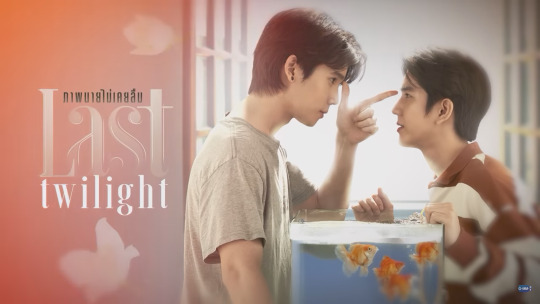
If you're hesitating at the doorstep of Last Twilight because you're not a fan of JimmySea, or because you've been overly disappointed by GMMTV of late, or because the plot of this BL seems hackneyed and/or sappy... I think Ep.1 may yet surprise you, as it did me. 😍
Whenever Khun Noppharnach eases into the director's seat, some kind of magic happens. I have no other explanation for this... I never thought much of this branded pair; Vice Versa was one big yawn as far as I was concerned (despite some very interesting world-building – but all that promise was soon squandered), and Jimmy's acting never seemed too far removed from barely-animated woodblock (in BBS especially, though he was greatly improved in VV).
But Ep.1 of Last Twilight has made me re-think all of that... Yes the plot does reek somewhat of the contrived (bad boy meets suffering, deficient angel and each is obviously fated to be the other's salvation). But Director Aof has managed to introduce some nuance into their portrayals (Sea's Day isn't some shining, selfless martyr – he's a sardonic, cynical, self-hating Dr. House destined for a different cane; Jimmy's Bad Boy Mhok – hello do-over Wai! – has emotional baggage from his sister's death and a strangely believable, platonic and supportive relationship with his ex-girlfriend Porjai, played by a luminous Namtan). The acting from the two main leads is notches above what we've seen them do in previous outings (I live for Sea's snarky little smirks, whenever Day's self-hate threatens to explode out at the world; and there are flashes of emotion crossing Jimmy's face that I never thought I'd live to see – watch the expressions flicker across his face when Porjai visits him in the lock-up, bearing dark news of his big sis Rung).
I think part of Director Aof's talent, that we never seem to give him enough credit for, is his ability to draw out the best from his actors. If they're limited by inexperience, there's only so much he can do (thus the Wai we got in Bad Buddy) but once they have more to give, it shows and I think he's the catalyst.
The cinematog is crisp and clear, but it also makes heavy use of close-ups with elements (usually faces) always slightly out-of-frame, calling out to Day's visual predicament perhaps? 🤔
And we've already had a director cameo! Assistant Director Meng Chaiyapat Pitisutrakul was also one of the interview candidates at Ep.1 [1/4] 21.16 and Ep.1 [1/4] 23.18 (he mentions his appearance on Facebook, linked here.)
I have cautious hopes for this one. You can sense Khun Noppharnach's assured hand operating behind the scenes, and it truly shows up in the work onscreen. Such a contrast with Only Friends, and so refreshing too.
#last twilight#jimmysea#jimmy jitaraphol#sea tawinan#meng chaiyapat pitisutrakul#aof noppharnach chaiyahwimhon
37 notes
·
View notes
Text

THE SEDCTION (1982)
"Tommy and I both saw this weeks ago and were too speechlessly stunned to review it. Because its perfect? Damn near DePalmic in its luxurious cinematogs, transports you to L.A. the very week disco died. A brief moment betwixt eras. And ColCamp, though wearing a pastel blue Boy Scout uniform is the fuxxiest ride-or-die friend / comic relief that living mannequin MorgFair could ask for. MorgFair is kinda like PricillaPresley in NAKED GUN, like... my eyes acknowledge dime but fear she'd crumple and shatter if you hugged her, like she a fragile artificial recreation of a sessy lady created by alien entity. Dig? Me insane? One question: why all the police and lawyers keep saying the stalker hasn't done anything illegal when he's breaking into her house and following her everyday? Useless men, all of them" -Sonny Gazelle
"Amen, child! Yeah this was in the deep overlap of mine and Sonny's Venn diagram. He kind of said it all, really. I agree totally about Morgs. She is objectively b'tizz but looks like an Anime character from a non-gameplay scene of a video game. Like I would take our girl ColCamp over her without hesitation because I feel like mid sess, Morgs might just degrade into pixels and I would realize I was humping the air. VR. Well since end-of-disco LA is mine and Sonny's WESTWORLD, maybe that's appropriate? Also just want to shout out our guy Cool Claude still grouchy as hell in 1982 as the worthless cop and Andy Stevens, who is like a B-tier ERob only even creepier. I've seen stuff where he's the good guy and I do NOT buy it." -Tommy Gazelle

0 notes
Text


Anora 10/10
-enjoyed watching it for some reason, deffo why it won the oscars, dis sum good shit acting bruh
-loved the cinematog
-and also, loved the fact that she never loved the guy nor cared for him, it's just she got a taste of how easy life could be to others kaya, call her stupid, but i think she just wanted to escape the life she had
-yung dulo, I don't think her crashout was because of trauma caused ni guy, but the fact na after makatikim ng ganon kasarap na buhay sa saglit na panahon, babalik nanaman sya sa kalapating mababa ang lipad, yung transition kasi from introducing the audience kung anong trabaho nya, next kung anong buhay nya outside work, where she lives, her state of living to a big ass mansion next and big events party party na napuntahan nya, and then back at the house, kaya ganon pagkakainterpret ko. anyway that's what she was crying about, the chance to actually win the lottery and make her life better forever, nawala pa
-ganda nung dulo hehehe no outro, just the sound of the car engine na tuloy tuloy
-i enjoyed this fully, good acting, it's funny, hindi yung expected yung cinderella ending typa shi, kahit yung kwento is walang twist na plot actually, i enjoyed watching it
0 notes
Text
Land Grab:
Meh.
Weird jumps between comedy and darkness, predictable villain, Ben couldn't possibly have found time to serve in the army alongside raising three kids and setting up the Ponderosa.
And the way certain episodes, including this one, show Irish characters is... Hmm. It doesn't sit well. Still missing that one awesome lady from season 1.
But hey at least someone who isn't Adam got to do the investigating bit and he had a break? (it's nice to see someone else solve the problems yes but he has the Clever give it back)
And poor Henri he was so sweet :(((((((
The Tall Stranger:
First dead girlfriend episode since... Well since The Sisters I think, unless you count Flashback Episode Elizabeth, My Love.
And boy is it an awful one.
All the action happens offscreen (literally all), the story jumps around to the extent of "Hoss is gone for a month and hardly anyone's worried" and "oops it's been almost a year have a montage", there's no satisfying resolution, no moral or clever ending...
This did not need to exist by any measure. Can we unexist it.
The Lady From Baltimore:
Elliot Arnold, writer of The Honour Of Cochise! And his writing skill does appear to be consistent!
Ben. Stop inviting old friends over. I can think of maybe one who didn't turn out to be a scam artist and her boyfriend almost killed Joe.
The clear but well-plotted symbolism of the horse-breaking, cattle branding, barbed wire...
Funny, maybe it's just me borrowing grief from the future again but Adam sounded a bit bitter about life on the ranch.
"Everything's done with pain around here" BABY ARE YOU OKAY WHO HURT YOU (ASIDE FROM ALL THE PEOPLE WHO HAVE)?!
Seriously what was up with that someone cuddle him this instant you can't just let that kind of statement go!
This guy proving he can absolutely write Adam and didn't bump him off two minutes into the other episode from lack of confidence...
And Melinda has great taste in men, obviously. She seems a bit young for Adam (at first sight I thought she was meant to be about seventeen which could be way off of course), but give it a couple years and they could have been a great match if Debra hadn't come in the middle and ruined her chances at seeming like the kind of woman he'd be happy with.
"Adam's far too cunning, he'd be too difficult to control" Really? I hadn't noticed 🙃
Poor Joe we were missing a scene of him and Adam talking over the situation and realising what had happened... I'm consoled by the fact that Arnold's previous writing credit shows he knows better than anyone how much Joe loves Adam and it's not a case of "wouldn't adding sibling rivalry be fun because they don't get on".
Good story, go Melinda (and Horace), hopefully Debra will live up to that offer of redemption because she didn't exactly seem like the type.
The Ride:
I'd made up my mind tonight's review would include "I don't think I like Ward Hawkins episodes, The Dark Gate must have been a fluke".
Then this happens.
Adam, my love.
First I have to shoutout that first scene which caught me completely off-guard (positive) in what seems to be a pastiche of the "classic Western" and a chance for some fun acting (Cranky Adam I did not know I needed you but you're adorable).
Then we have. Well.
It was very much like The Fugitive.
Just Adam's intelligence, determination, and sense of duty and morality.
Against the world.
I feel like his being part-Betazoid is basically canon at this point. That iron certainty feels like a supernatural knowledge of the truth.
We didn't have the intense loneliness of The Fugitive with a Virginia City setting where the whole family is there to protect him even if they aren't sure where he gets the will to keep fighting, which is something I do like. Adam shouldn't have to be a man alone, he deserves to feel that love behind him and know at least some of the burden can be shared.
Not that I don't love his singlehanded determination in The Fugitive of course! It's just a different kind of beauty!
The cinematography reminds me of The Dark Gate, with all the closeups that just let Adam's beautiful (and talented) face do the work.
With some actors I might have found the pacing slow, but this feels like a writing and directing team who know they can trust a wonderful actor to pull every bit of his weight in a tense psychological story.
(Adam got shot again ouch I guess it's been too good to last)
That face-off, calmly taking that goading and a threat to just gun him down, sitting there and quietly refusing to enter a fight he can't win, knowing he'll be branded a coward, without honour, or both... That's also bravery, the same kind that spurred him on this whole time shown in a way that isn't flashy or proactive. He's brave in the way Simon Tam is.
Admitting he was scared, then instantly shifting focus to "if he killed me there'd be nothing stopping another innocent man from being killed"... Adam. Please. You're allowed to show vulnerability for once, to honestly say you're scared for your own life without couching it in greater good.
I like that, despite it being obvious from very early what the climax would be, they kept building in a way that felt natural - Adam might be strong-willed, but he's rarely impulsive.
Beautiful story. Beautiful man, in every sense.
I'd say I owe Ward Hawkins an apology if The Tall Stranger weren't still possibly the worst episode I've seen yet on this show.
3 notes
·
View notes
Text
0 notes
Text
Movie Review: Passages takes the risk of a more modern transformation
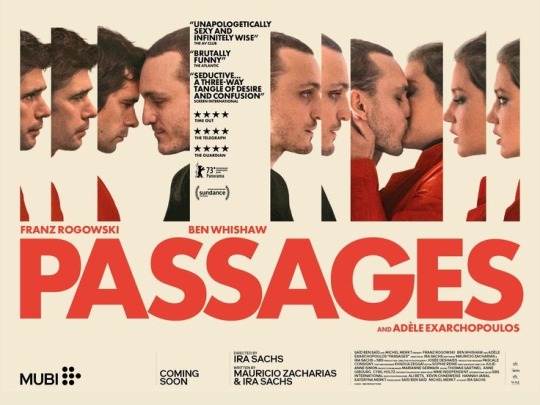
The romantic drama genre has been present in major Hollywood blockbusters. Whether they are based on a novel or are original stories, many of them have been awarded and multi-awarded and are liked by locals and strangers. The month of February represents a consumerism that has been established for decades, dinners, romantic details celebrating anniversaries, or simply the day of love and friendship, something that is the pillar of great moments, some with happy endings and others wishing to be, the reality Romanticism has not gone out of fashion. But what about these romances in the 21st century? How multifaceted love can be has been reflected in more real, rawer, more modern alternative stories that move away from princes charming and princesses looking for love for life, sexual and gender diversity have also featured in plots. very intense and interesting among which we can name Kiss of the Spider Woman (1985), Philadelphia (1993), Happy Together (1997), Boys Don't Cry (1999), Brokeback Mountain (2005), Weekend (2011), Tangerine (2015), Call Me By Your Name (2018), Palmer (2021) and Great Freedom (2021) are a clear example of simple works that take a very different turn from the traditional and trite. In 2023, director Ira Sachs presents Passages, a French dramatic/romantic film that addresses the issue of polyamorous relationships and their consequences in a world where diversity has earned a respectable place in a society that still refuses change.
What is the film about?
During his last day of filming in Paris, film director Tomas (Franz Rogowski) has a fleeting romance with Agathe (Adèle Exarchopoulos), a girl he meets in a nightclub on a night of drinking when Tomas proudly tells her husband. Martin (Ben Whishaw) develops a passionate relationship between the three marked by passion, jealousy, and narcissism with consequences for each of them that will be difficult and painful to face. To see a film like this we must consider that this and more do happen in real life, the context is particular about its plot and what happens in it, we are in an era in which modernity has reached all ages, areas and the romantic/sexual could not be the exception, we well know that these types of relationships have always been hidden from a society that must be politically correct and here we ask the question: who said that relationships must be politically correct? Before, it was a social imposition that marriage recognized by law and the church was between men and women, with lesbian and homosexual relationships being condemned and persecuted by them as something aberrant that transgresses the freedom of expression of those involved, leading to them being condemned and even murdered, in the 21st century, although things have changed a little, there are still too many things in which we must be more aware based on respect for the rights of others and of each individual as well as their sexual preferences and human rights. Hate and discrimination crimes are the graphic and plausible representation that as a society we still have a lot to learn, but this is not a film of denunciation or education, it is a work that shows that behind 4 walls and outside of them any relationship between adults is valid as long as it is consensual and in which those involved agree without violating their rights. We also know from a very early age that the ideological and cultural formation that each country has, as well as education, have a lot to do with the freedom that each individual has to express themselves personally, family, socially, at work, etc. Little do we understand that the human rights that each of us has are supported and based on the laws of each country, no one is more or less, but corruption and abuse of power is what is believed to give another individual the right to violate rights. of the others are men or women of any age.

Ira Sachs is one of the creators of cinematographic dramas who takes the most risks bringing different stories to the big screen, Passages takes a very specific place and moment in independent cinema that is not so commercial that it has its audience, in this case, It is a love triangle in which 2 homosexual men relate romantically and sexually with a woman, creating a relationship that falls into the turbulent, emphatically sexy and presumptuously desperate. However, the contrast between the main plot and the subplots that develop at the same time makes it extremely interesting and intense. Set in contemporary Paris, there is no outside world with which the characters can relate. That is, the environment in which they live is powerful enough to create an atmosphere in which they get involved and involve us as viewers in a plot that becomes more complex with every moment. This begins on a film set where we see the director Tomas making a period film called Passages, he is an irritable author and very demanding with the work of others, he manages and questions his cast and his extras which means that they do not Does he have an assistant director to whom he can delegate that type of work or is the production simply like that and to a certain extent abuses his power over others, during the closing party of the filming Tomas is accompanied by his husband Martin where we can see that As a couple they are fun and they get along very well, jokes, alcohol, laughter about whether they can dance or not and with whom Tomas walks around the dance floor with Agathe, a woman who has been keeping an eye on the production on set, they feel attracted. and interested in each other, Agathe has just ended her relationship with her boyfriend and is very open to whatever may arise, while Tomas is married but is also very open to the possibility of living new experiences. From this point on, the film tells us that it is not so necessary to give too many explanations about what we are going to see, they have already presented a situation and the characters getting involved with it, there is never an explicit mention of the extent to which the relationship between Martin and Tomas is open but after this film director spends the night with Agathe he tends to exuberantly share with her husband that he had sex with this woman and wants to fill him in on everything. It is to be expected that Martin does not respond with the same enthusiasm and feels jealous of her and her relationship, which he believed was monogamous to a certain extent, while Tomás nods and insists that it has been exciting, something different but that as viewers we know that it falls into a routine. of self-deception where Martin knows that he does that every time he finishes a shoot, apart from this, Tomás' objective is to edit the film so that it arrives on time for the Venice Film Festival, which further develops his character and we understand more about his motivations derived from his creative work stress to justify his behavior to others, changing this character's sexual orientation is a different and unusual approach to facing his fears and insecurities with his partner, we meet him as a fascinatingly talented guy, manipulative, creative but undesirable for others except for Agathe and Martin who feel so attracted not only physically to him but also for his confident and challenging attitude, they see him as the ideal man who can face everything and every one by defending his way of thinking, his way of being and who he loves. Passages develops a convincing and current story without falling into excesses, it presents what it should propose without taking more time than necessary, the development of the characters is neither exact nor planned, and neither Agathe nor Martin are weak but at different points in the narrative they give in to What Tomás wants, they are neither victims nor perpetrators, the three of them agree to have a relationship this stormy without taking into account the consequences that this will have for each one, as is expected and by involving feelings, they are the same ones they play with without placing limitations on their actions. After Tomas confesses to his husband and intends to maintain a relationship with Agathe Martin, he begins an affair with Amad (Erwan Kepoa Falé), a young and brilliant writer/editor who gets involved and understands what is happening, telling Martin that he is weak. and that he still cannot fully see the consequences of what he does and allows that if he continues like this none of them will survive that relationship. The ending is not hopeful but it makes it clear to us that characters and people in real life like Tomás who Despite the emotional havoc he has caused himself and other people, has not understood or learned anything and will continue doing what he does as long as others and his own life allow it.

The script written by Mauricio Zacharias and Sachs himself takes too many liberties without falling into tedium or boredom, each dialogue is strategically planned so that the entire plot makes sense and we can see a more agile narrative development that keeps us interested. Every moment of what is happening, there are no surprising twists, by the end we already know how things will end, something that does not disappoint us but leaves us thinking and wondering what we are doing right and wrong in our relationship. Is the person we are with enough to make us want to spend time with them or do we need something to turn the relationship around? The story is concrete and well-defined where it wants to take us, it is effusive and demanding in itself, and with the transitions, large and small, in the motivations and justifications, in the decisions that are made, it has a dramatic sentimentality, the sexual scenes They are not explicit but with a dose of eroticism typical of a film more for adults, it is less interactive and more observational in the intelligence of its execution and directly analyzes the moments of transition in each person's life. It is profound in the conflict of knowing whether or not they are prepared to support themselves on a more sentimental basis, at times it becomes moving and intimate in its independent approaches with the characters, in the life baggage that each one has and in The experience in their relationships raises why they do not work as a couple but do work in a polyamorous threesome or quartet in which they do not yet know how to define the rules and limits, something that is defined within the relationship itself and by the individuals involved. without taking into account an imperative culture, education, and society. However, Sachs as a director does not treat this as if it were a speech of moral reflection or emotional implosions, he does not intend to convey a message in which the love between two people is the most important thing, or that love triumphs over all things. , it is rather a look at what is happening in today's society and in the relationships that we look for in applications or our sites for that matter, whether fleeting or long-term or the importance of starting a family, abortion, as The film is not so cynical in its approach and calls a spade a spade and is explicitly aimed at an adult audience without making a complaint or attacking the way of being and thinking of those who are part of a different community. Its director as well as the scriptwriters balance very well what is desire with desperation in a marriage that has already given everything and cannot give more, narrated in 2 parts where the first half emotionally establishes the characters while The second half develops the causes and presents its ending, both simple and complex. The cast is made up of Franz Rogowski, Ben Whishaw, Adèle Exarchopoulos, Erwan Kepoa Falé as Amad, William Nadylam, Caroline Chaniolleau, and Olivier Rabourdin do a great job, each one perfectly knows how to develop their character and give it more credibility and realism. In conclusion, Passages is an independent and risky film that boldly transforms a topic that can be controversial into something more real and current about human complexity and relationships, an almost impeccable work that leaves us thinking about something beyond a simple message. Passages are now available on the Mubi and Apple TV platforms. https://www.youtube.com/watch?v=m5Kr38lovJc Read the full article
0 notes
Text
Movie reviews if i mayy say so lol
Review of new little mermaid - main character ariels acting was Horrible a lot of the characters didnt seem to grasp their character or missed opportunities to get intoo their role! U can tell they were all too old or too young to have watched the orig/old disney movies many times, enough to understand and remember and display the dramatic extra style of disney characters performances!! Thats whatd made em fun!! Cinematog wasnt as good as orig too!! Orig was art, every frame looked beautiful and they didnt even try to make shots in here particularly artful like orig. they redid a lot of the dialogue and its awkward and unpoetic and clunky now. But they did include of a lot of important specific moments and scenes i meed from the orig. and prince eric actor was pretty good. Casting for ursula and the mom was cool and leaning into carribean culture at the time was cool. Jeanne du barry movie -perfect Good closure good performances interesting characters artful looking shots clear story telling. I was afraid it sounded like trashy period piece romance lols but it wasnt! Well plus it was a true story. Liked it leagues better than one that takes place in a nearby tome period about marie antoinette cause this was able to squeeze a point and closure out of the story, unlike the marie antoinette one. But sometimes its probs hard to calculate the point of a story if its nonfiction and not made up withh a point in mind when it was created lols!
1 note
·
View note
Text
0 notes
Photo










Brendan Stacey has been nominated for the Canadian Society of Cinematographer’s award for Best Dramatic Cinematography for Titans 2x11, “Bruce Wayne”. He’s nominated against:
David Greene - Impulse "The Moroi" Gregory Middleton - Watchmen "This Extraordinary Being" Boris Mojsovski - Knightfall “Death Awaits” Craig Wrobleski - Umbrella Academy “I Heard a Rumor”
#man this isn't even my favourite ep visually in the season and going back through it I realised the cinematog in this ep slapped hard#titans#cinematography
81 notes
·
View notes
Photo
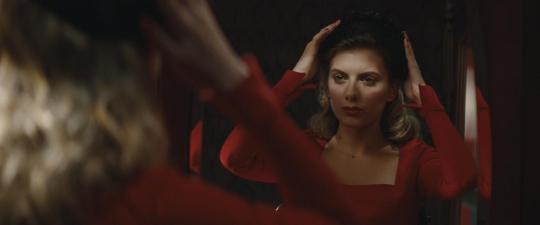
'Inglourious Basterds' (2009) DoP./ Cinematographer: Robert Richardson
12 notes
·
View notes
Photo
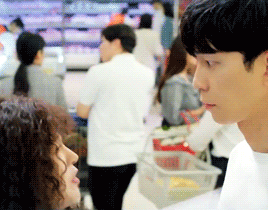



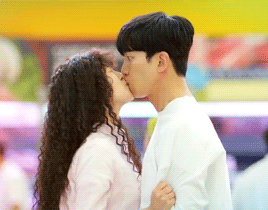
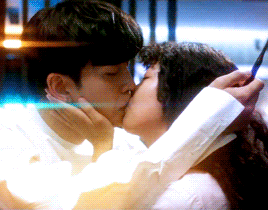
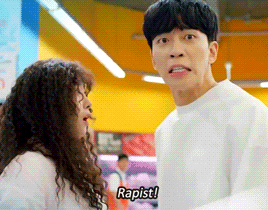
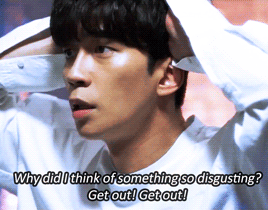
Perfume (2019) - Seo Yi Do x Kisses
Do you know how people started to kiss? Back in prehistoric times, men checked the inside of women’s mouths to see if they ate food while they went hunting. They say that changed to become kissing. That’s the true meaning of kissing. It’s just that for us too.
#kbs perfume#kdramagifs#kdrama#shin sung rok#go won hee#perfume#퍼퓸#jernahorizon#2019#honestly this show is still pretty cute and funny???#for once there's a kdrama that i can barely find content for#(the colouring and cinematog are def not very fantastic just from giffing experience)
47 notes
·
View notes
Photo





baby dont stop, PLAY (x)
#nct#taeyeong#ten#nct u#nct 127#sm nct#nct sm#kpop#this video is too nice#damn nct got good cinematog#im still not over boss
23 notes
·
View notes